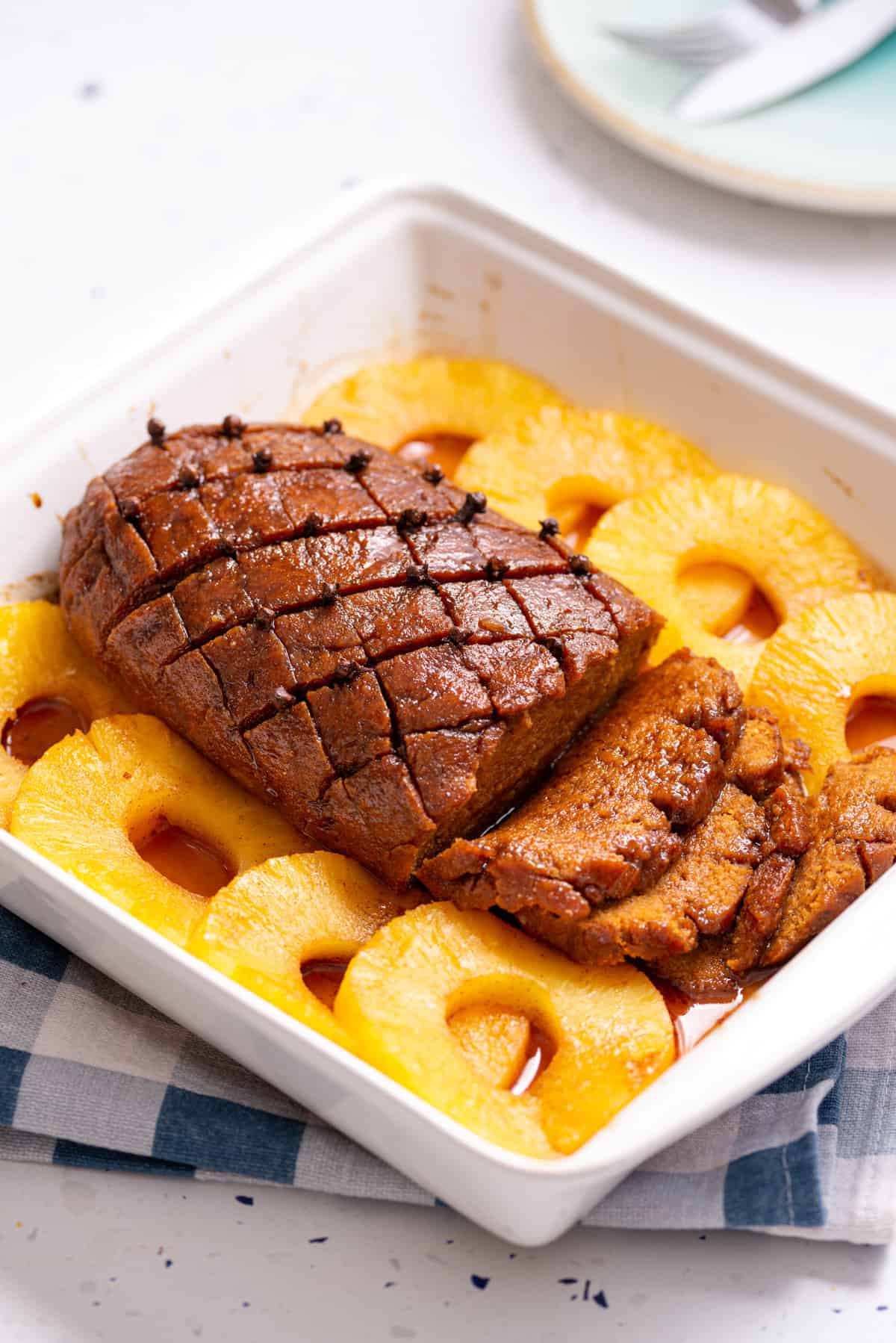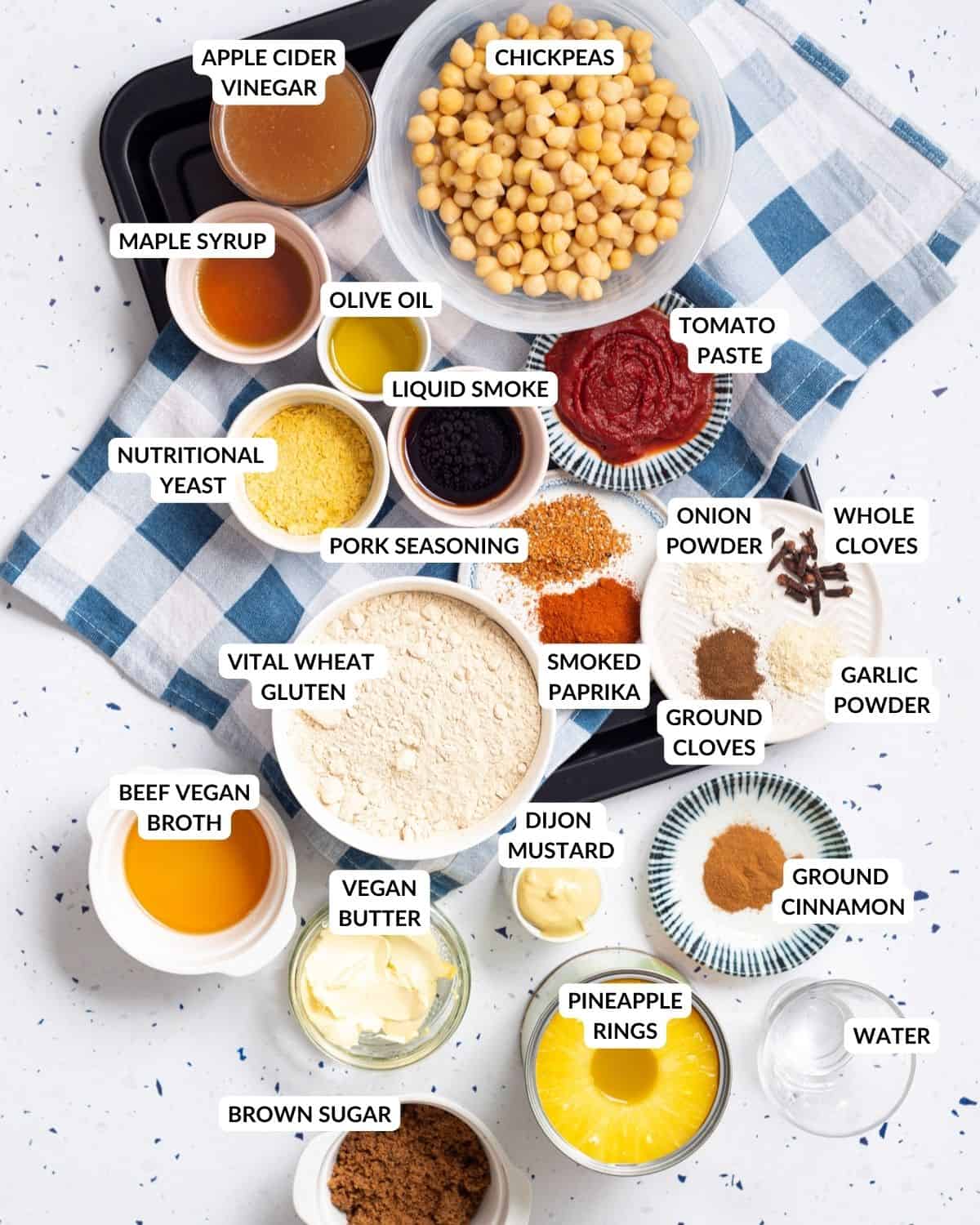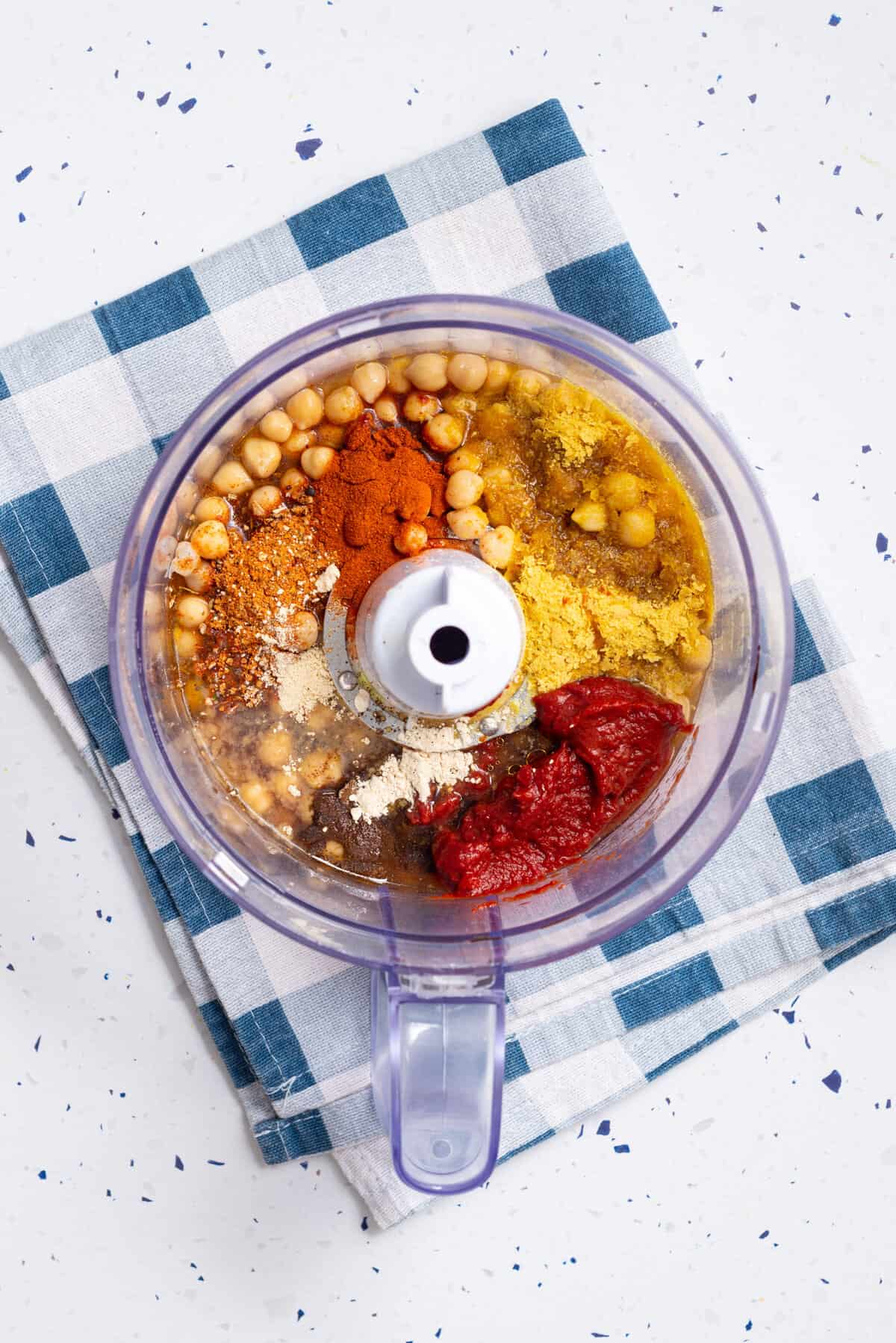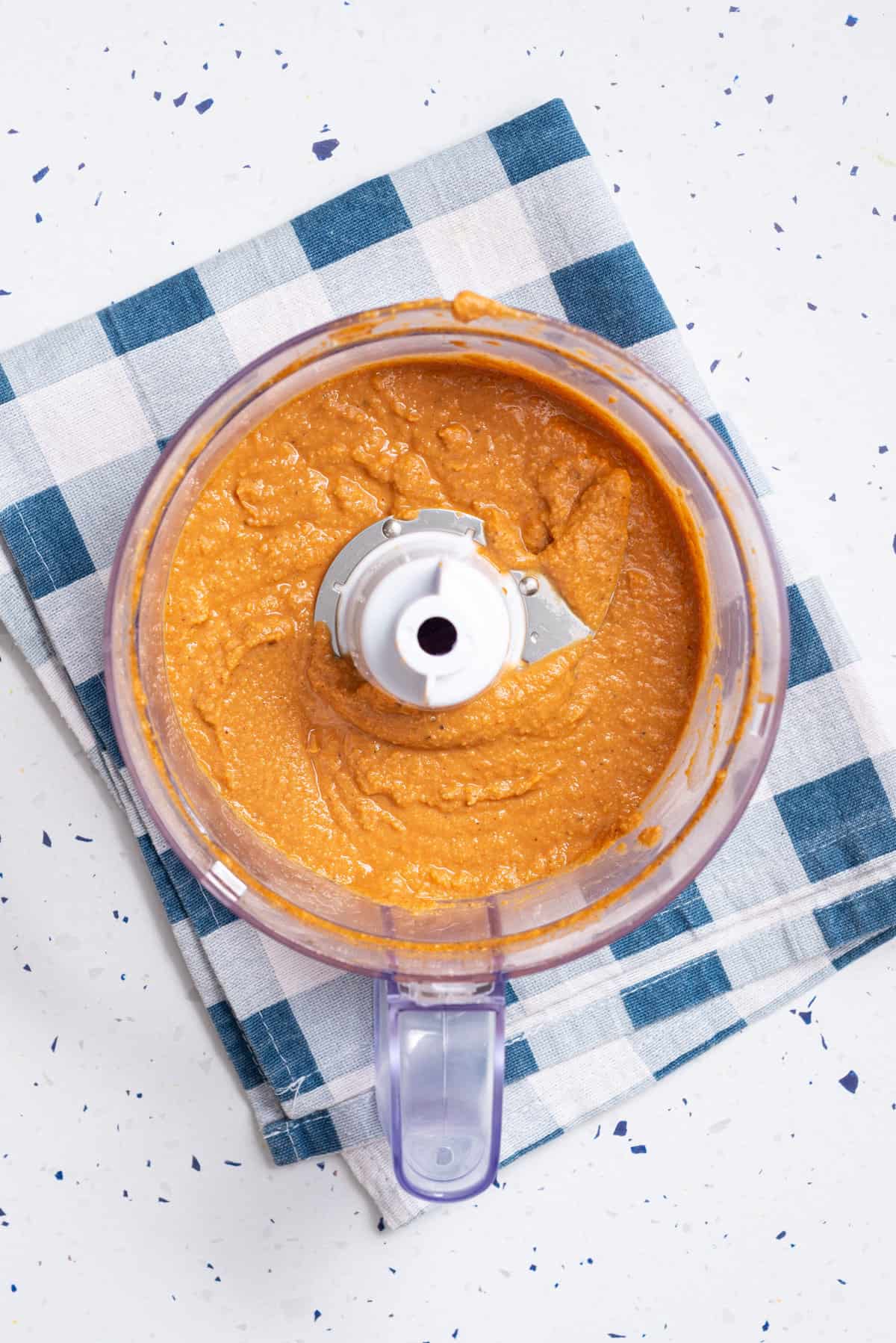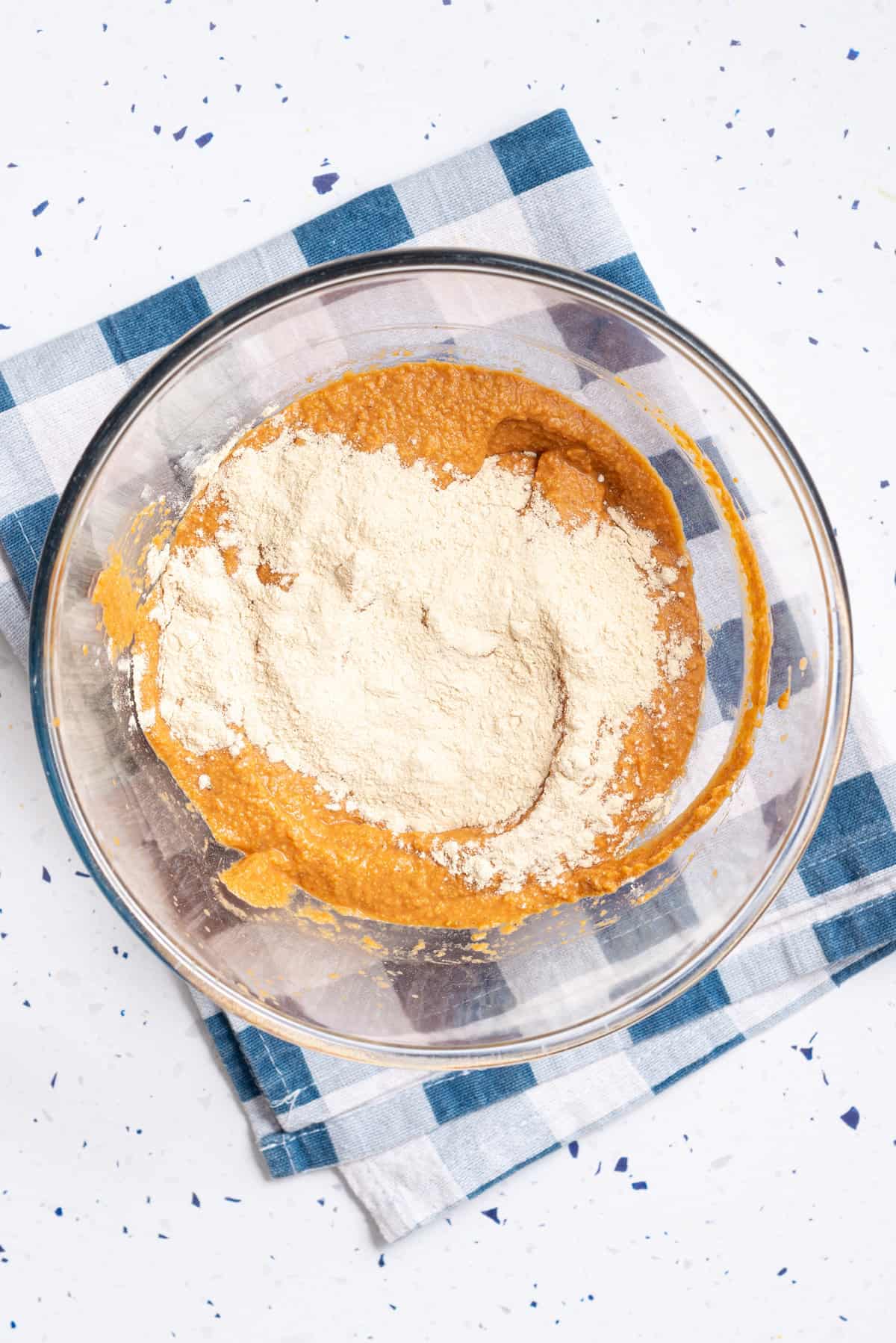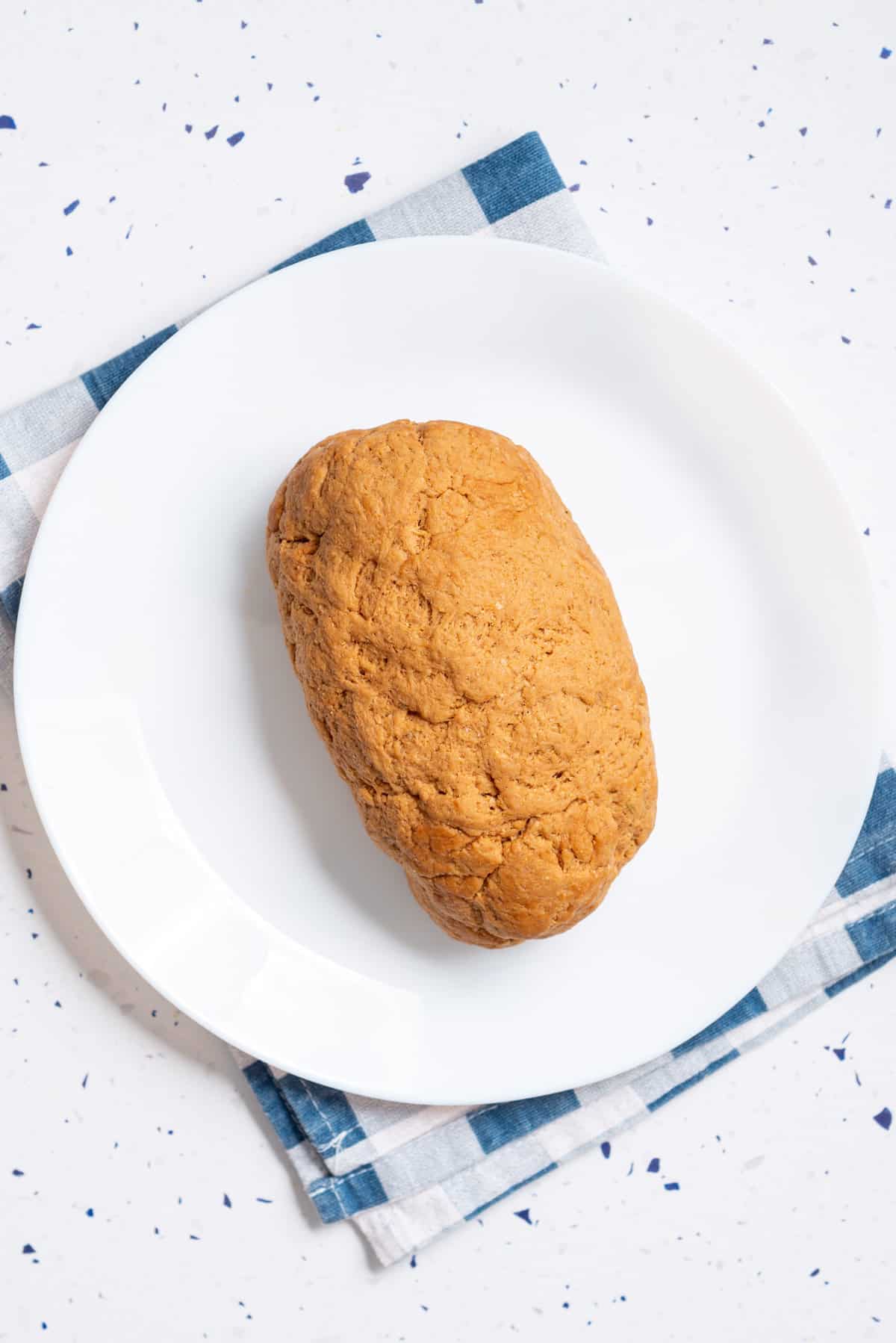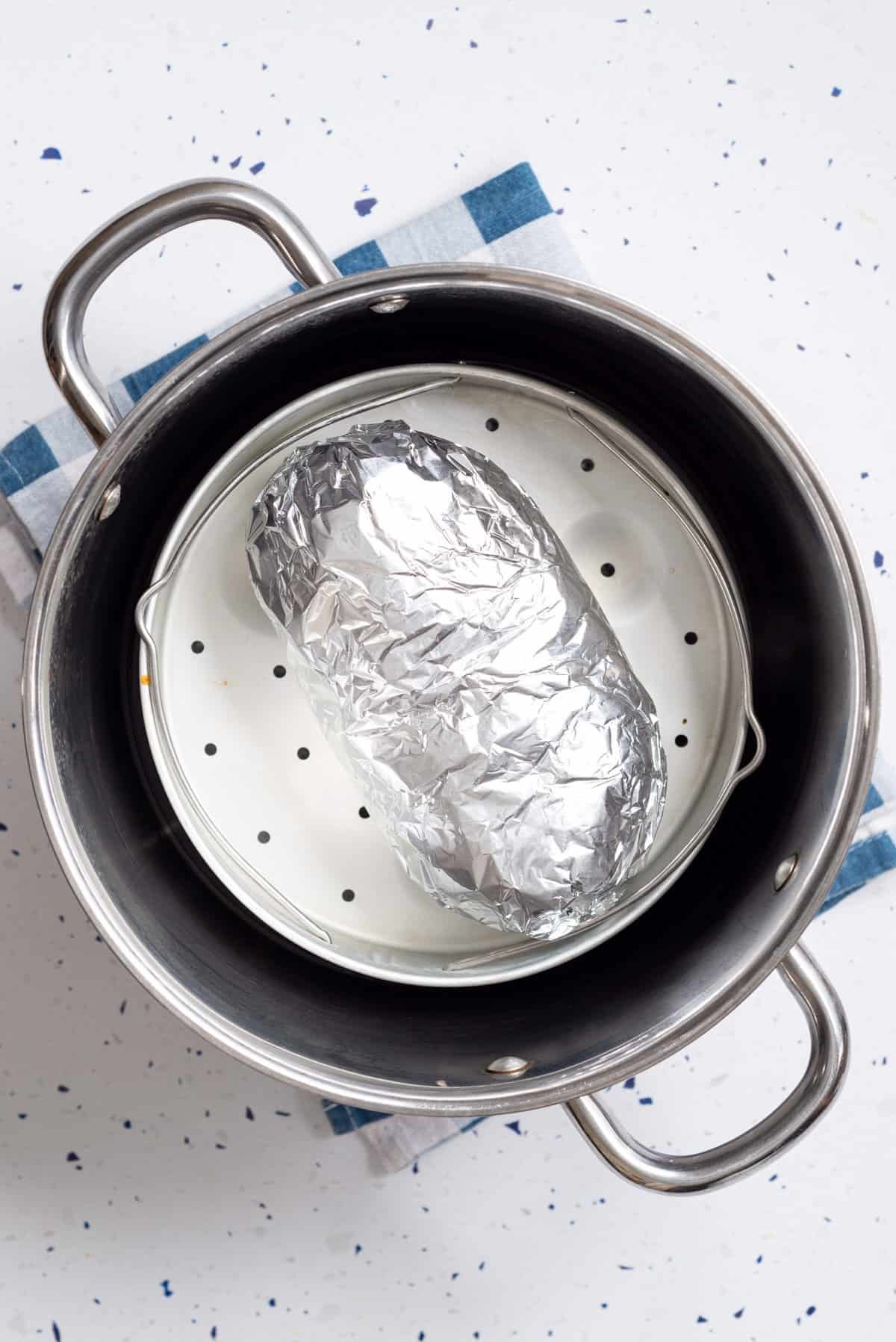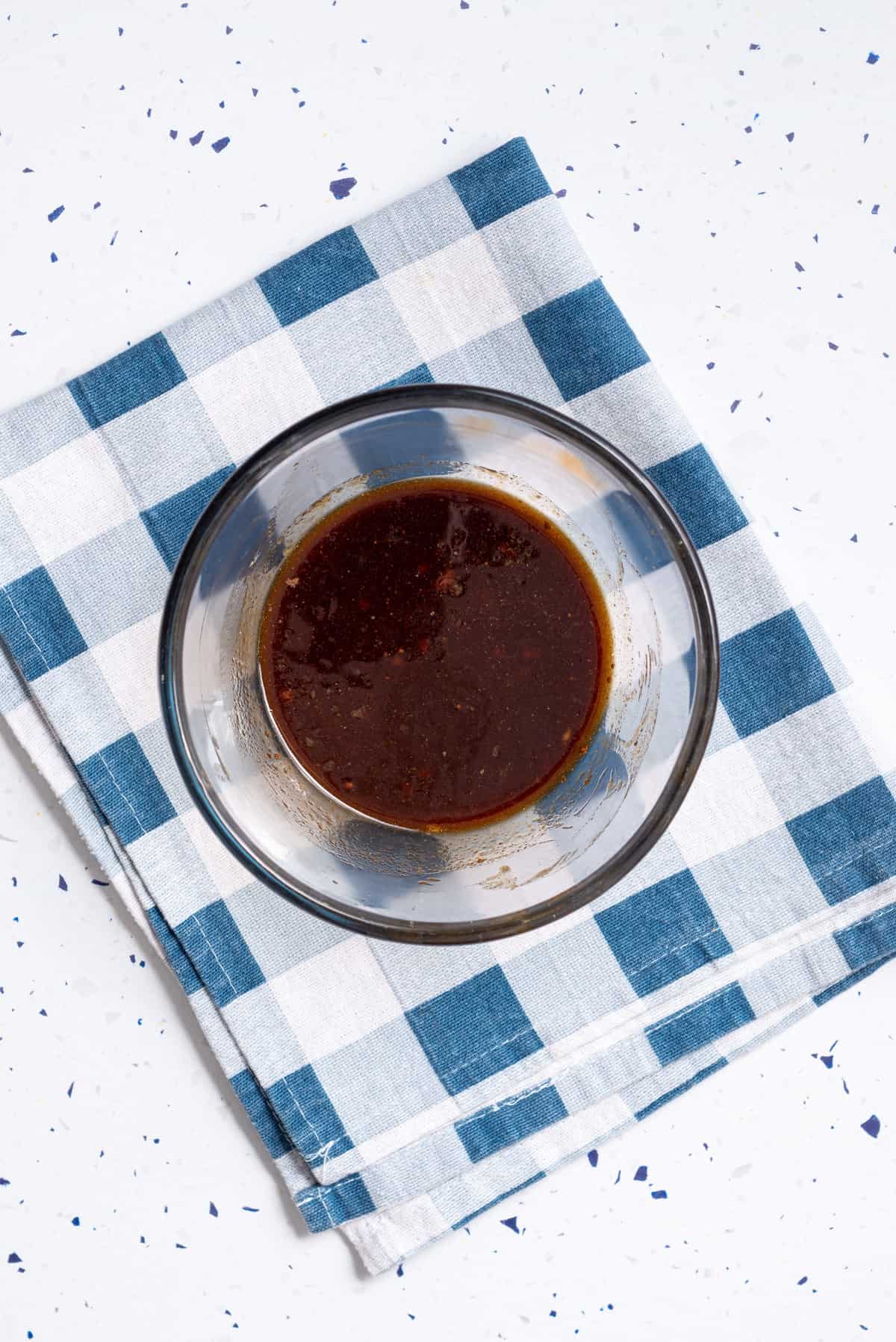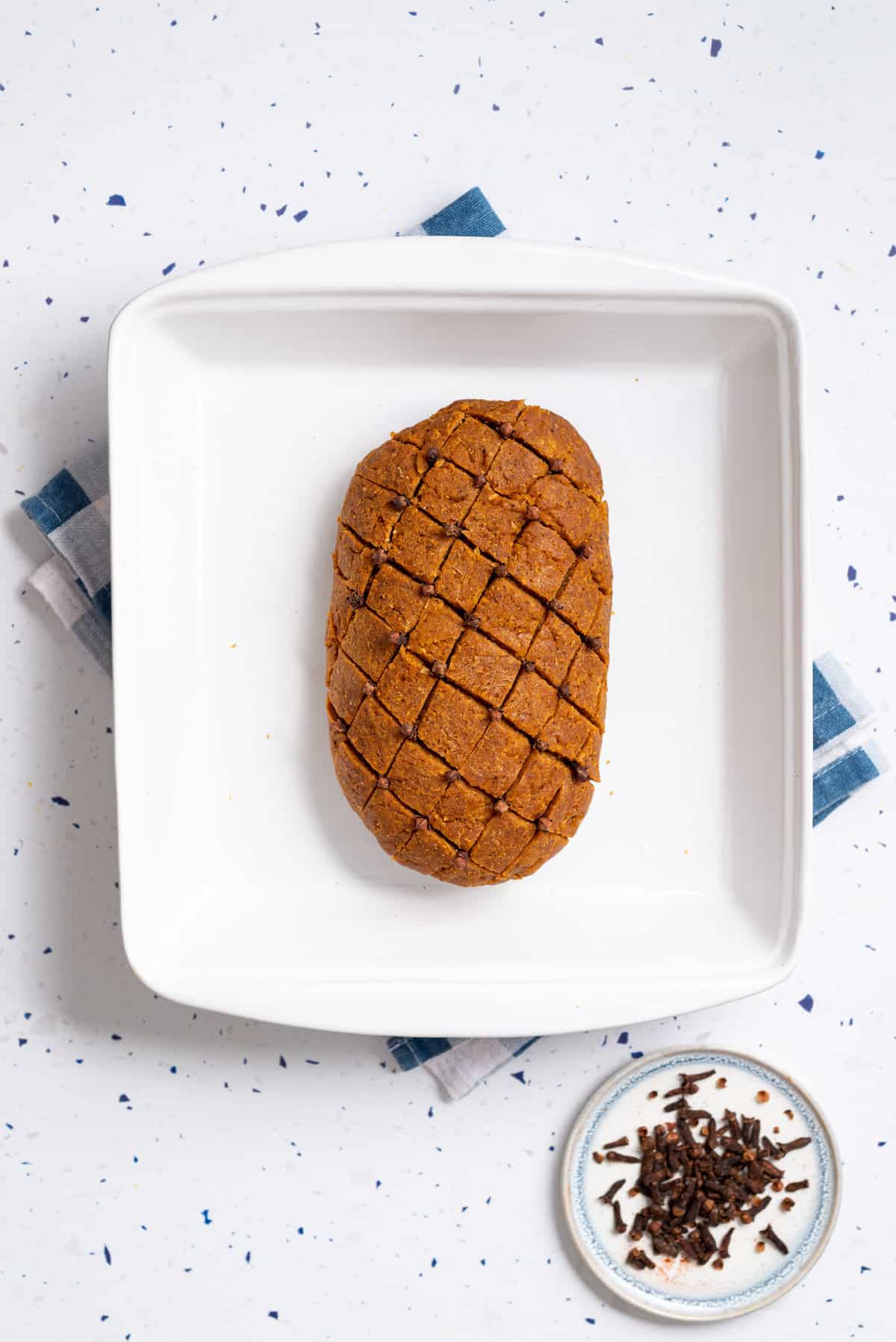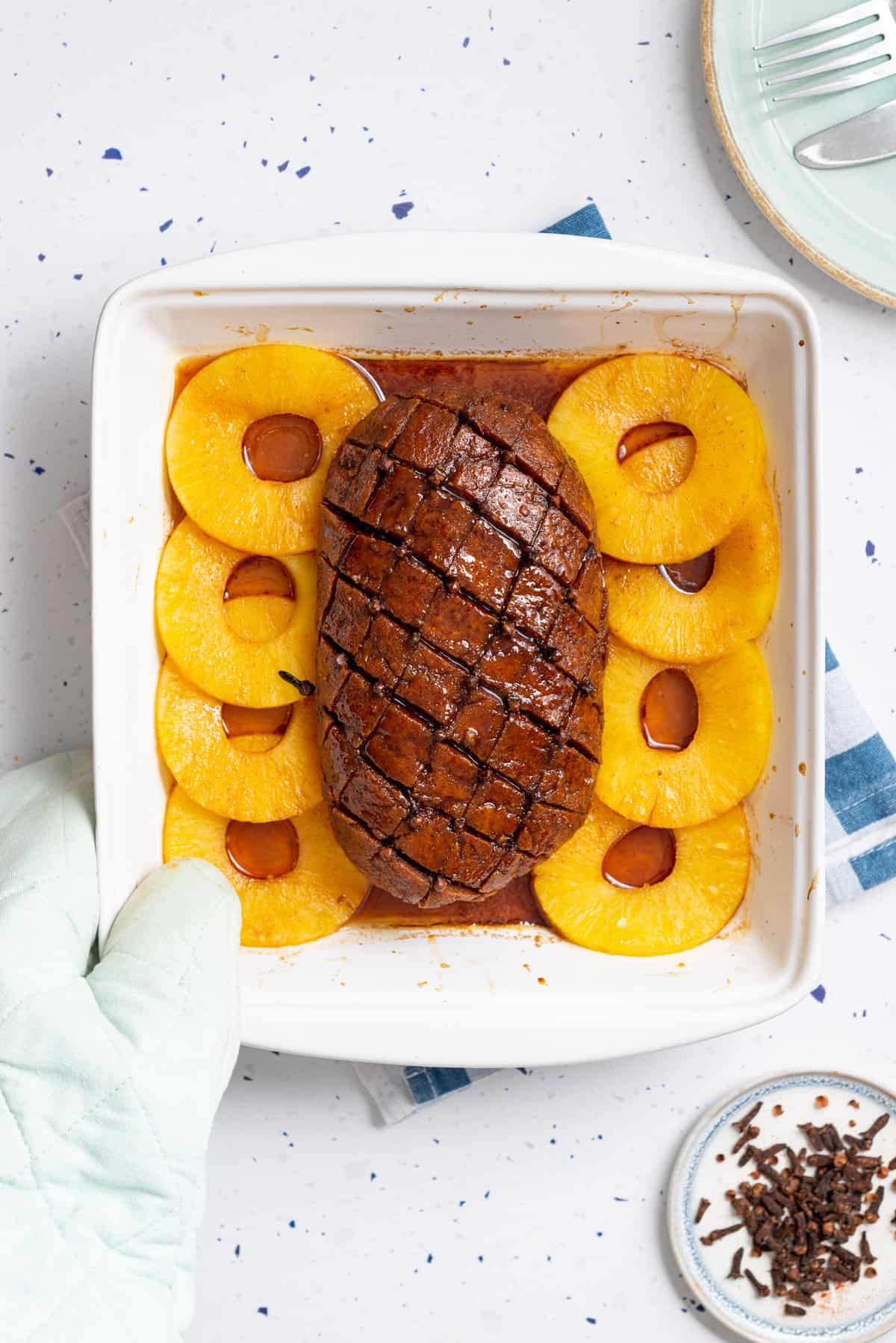This post contains helpful tips and tricks! If you’re in a rush, please use the “Jump to Recipe” above!
Notes and Variations
Choice of broth. For this recipe, I use “better than beef” broth because it mimics the flavor profile most closely. However, you can substitute it with any vegan or vegetable stock of your choice (noting that the final taste will differ based on the broth you choose!) Choice of oil. I use extra virgin olive oil in this recipe, but you can use refined coconut oil, avocado oil, or any other oil of your choice. Experiment with spices. This recipe follows traditional flavors, but you can experiment with spices and herbs to create a flavor profile you love! For instance, you can add in soy sauce or hot sauce for a spicy, umami-rich roast. Moderate smoky flavor. Using liquid smoke and smoked paprika creates a really classic smoky flavor, but I find that the recipe tastes just as good without these! So if you want to tone this down, you can use regular paprika and leave out the liquid smoke. Make it gluten free. This recipe uses vital wheat gluten so it is not friendly for those who need a gluten free roast. Instead, try this version with extra firm tofu as the protein base. The maple glaze is gluten free as written!
Vegan Ham Glaze Variations
Crafting the perfect glaze for your vegan ham is a critical part of the equation. I’ve used a traditional maple glaze, but there are plenty of options to choose from when it comes to creating a unique and flavorful glaze. Here are some of my favorite variations.
Tastes just like the real thing! There’s no need to sacrifice flavor when you switch to vegan ham. This recipe is made from plant-based ingredients that give it a flavor that’s just as delicious as the traditional meat version. I normally serve this as the main course for Easter and Christmas dinners! Healthy and packed with protein: This vegan ham recipe uses chickpeas as its base, which provides a good source of plant-based protein. Versatile and customizable: You can adjust the herbs and spices according to your taste preferences and use it as the protein in vegan ham sandwiches, wraps, salads, for a delicious meal any day of the week.
Want to try other seitan-based recipes? Check out my vegan turkey roast and vegan drumsticks too! For the traditional glaze, you’ll need vegan butter, brown sugar, maple syrup, Dijon mustard, ground cinnamon, apple cider vinegar, and pineapple slices in syrup. This is optional, but really takes the recipe to the next level in my opinion.
Spicy glaze: For an extra kick, try adding a blend of your favorite spices (e.g., paprika) to the glaze before baking. Sweet and savory glaze: Mix up some molasses and brown sugar for a sweet and savory flavor profile. Citrus glaze: Brighten up the dish with a zesty orange or lemon juice-based glaze. Herb-infused glaze: Herbs like rosemary and thyme add great flavor to this vegan ham recipe—try incorporating them into the glaze for added depth! Mustard-based glaze: Mustard adds a tangy flavor that pairs nicely with the other ingredients in this dish—try whisking it into the glaze before baking!
Once done, remove from heat and let the loaf cool for a few minutes. Remove from the foil. Note: You’ll need a food processor for making this vegan ham recipe. It is possible to make this by hand by crushing the chickpeas with a masher, but a food processor makes the blended texture much more smooth! Cover, bring to a boil, and reduce heat to simmer for 1 hour. Add more water if necessary. Make sure to check on the seitan once it’s simmered for an hour, and cook for up to 30 more minutes to make sure it’s fully cooked through. Preheat the oven to 425°F with about 15 minutes left on the steam time. Pour half of the glaze over the seitan ham and bake for 30 minutes, basting every 10 minutes. Save some glaze for the end.
🍴 Serving and storage suggestions
If you tried this recipe, don’t forget to comment and rate! ⭐⭐⭐⭐⭐
Knead firmly. Seitan dough needs to be kneaded a good bit, and with a good amount of pressure. When done, it should feel soft but sturdy. The more you knead, the meatier the texture will be. Wrap the seitan ham tightly. To help the vegan ham retain its shape during cooking, wrap it tightly in foil or cheesecloth. This will not just help with holding it together, it will also prevent the vital wheat gluten from expanding and becoming spongy. Steam thoroughly: Seitan can be finicky, so make sure that it is steamed all the way through before you move to the next step. I’ve found that using a steamer basket works best for me. However, you can also use a bamboo steamer, a foil pouch, Instant Pot, or oven. Glaze generously. Make sure the brown sugar is fully dissolved in the glaze. Continue to baste every 10 minutes to ensure the flavors soak in, and so you can ensure a moist end product. In fact, extra glaze during cooking can help create a savory crust! Let it rest. After cooking, let the vegan ham rest for at least 10-15 minutes before slicing and serving. This will help the ham retain its shape and juiciness, make it easier to slice without falling apart.
Vegetables: You can serve this with seasonal vegetables (garlic green beans, roasted sweet potato fries, grilled asparagus or microwaved asparagus, air fryer Brussels sprouts, or wait for it, Brussels sprouts and asparagus) Salads: Try a refreshing kale salad, a more hearty roasted beet salad, light spinach and avocado salad, or this Italian potato and green bean salad) Something more comforting: Think stovetop or Instant Pot mashed potatoes, polenta cornbread, or a classic potato salad for a hearty meal. Casseroles: I love serving vegan ham roast with this asparagus casserole for Easter (especially since it’s in season!)
To serve, bring the ham out to room temperature, apply the glaze, and follow the rest of the baking instructions. This can be a convenient way to save time when preparing a meal for a special occasion! While you can technically freeze the dish, I don’t recommend it unless you absolutely have to - freezing and reheating can impact the texture. However, if you really want to freeze it, steam the seitan loaf, then allow it to cool and store it in a large freezer-safe bag up to three months. Then, thaw overnight in the fridge, and then follow the rest of the glazing and baking instructions.
🌱 More hearty vegan vegan mains:
📖 Recipe
